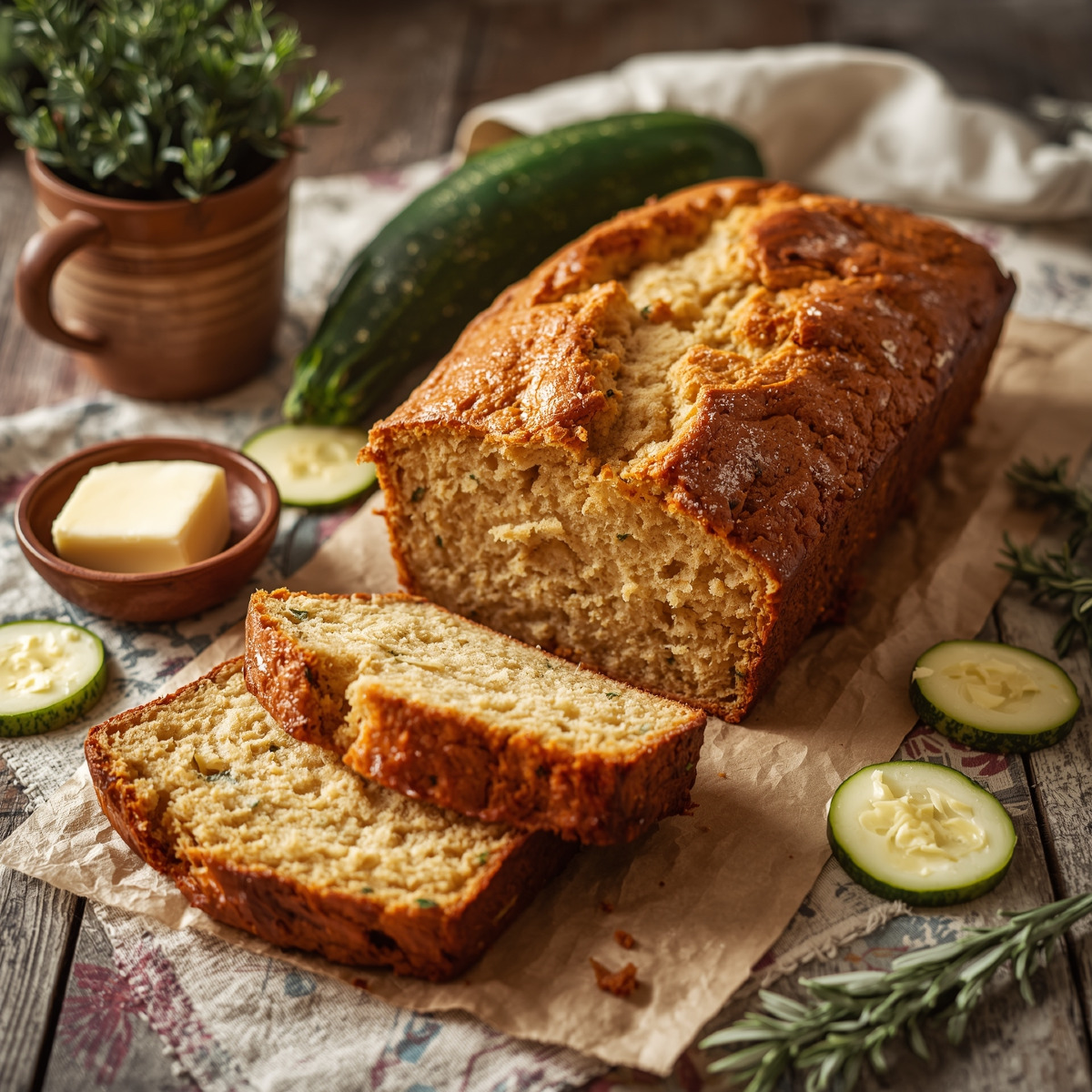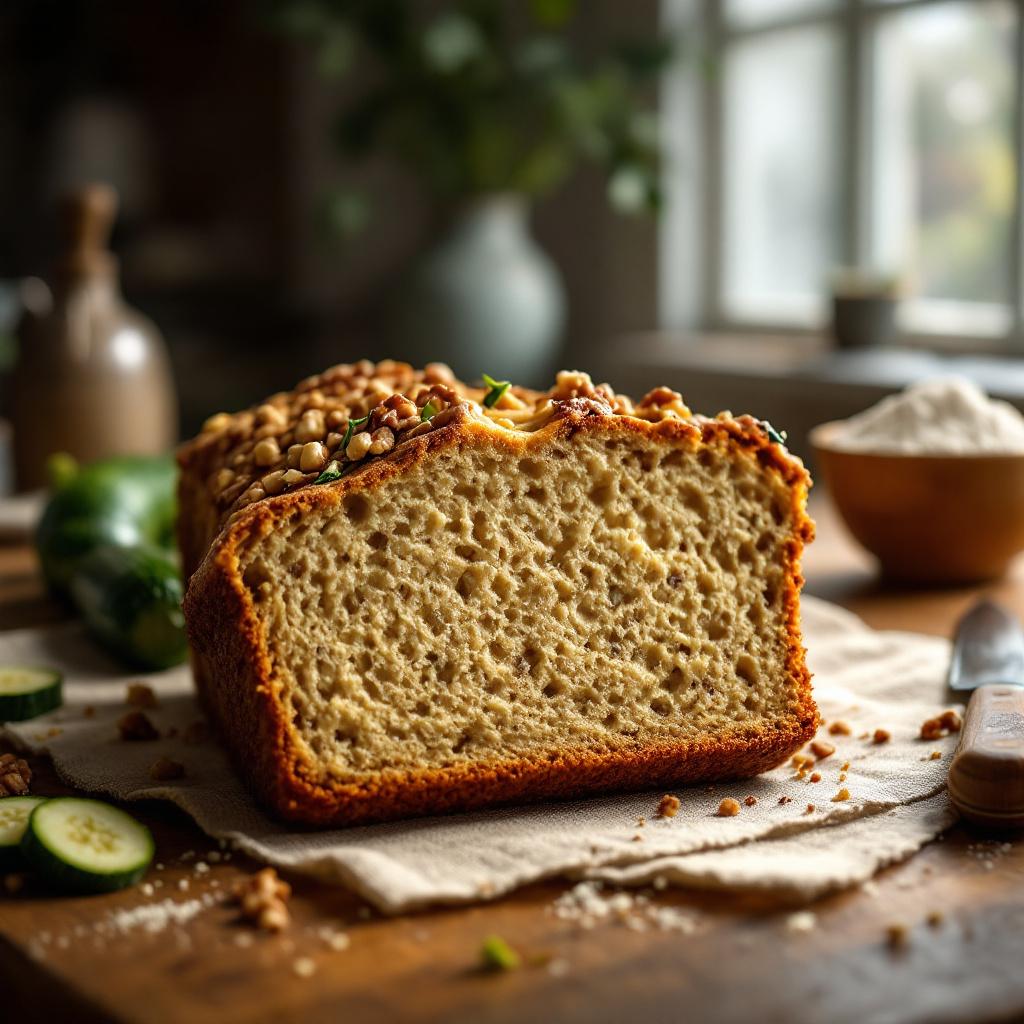Creamy Garlic Parmesan Chicken Recipe (One-Pan, 30-Minute Comfort Food)
(Recipe at the bottom)
The other night, I came home tired and just wanted something warm and cozy without a hassle. That's when this creamy garlic parmesan chicken saved the day. It checks all the right boxes, from tender meat to a buttery, creamy sauce—plus, it’s a simple one pan recipe that comes together in just 30 minutes.
This dish tastes rich and indulgent without taking hours or relying on fancy ingredients. The flavors melt together, giving you that comforting, homemade vibe even on a busy weeknight dinner. If you love quick recipes that deliver real comfort food, this step-by-step guide is right up your alley.
Why Creamy Garlic Parmesan Chicken Is a Weeknight Winner
Creamy garlic parmesan chicken stands out for its rich flavor and quick prep. It’s become a staple on countless dinner tables, thanks to its crowd-pleasing taste, one-skillet approach, and satisfying protein boost from tender chicken breasts. With more people leaning into indulgent comfort food in 2025, this quick recipe checks all the boxes. It’s simple enough to whip up after a long day, yet special enough to impress on any weeknight dinner.
Flavor profile explained
This dish makes the most of a handful of simple ingredients. The flavor begins with roasted garlic, which loses its sharpness while developing a warm, almost sweet depth. Then there’s the parmesan cheese. Its bold, nutty character adds a salty punch that blends seamlessly into the creamy garlic sauce. Parmesan cheese’s natural umami enhances every bite without overpowering the other flavors.
The sauce ties everything together with heavy cream, creating a silky, rich texture that clings perfectly to each piece. This creamy sauce balances the sharpness of the parmesan and the zing of garlic, layering flavors to deliver a heartwarming experience. It’s never heavy or bland, making it ideal comfort food that satisfies without weighing you down. For a deeper dive into what makes this sauce shine, check out the post by Salt & Lavender, which breaks down how each flavor elevates creamy garlic parmesan chicken.
Quick prep and cook time
Dinner should be easy, and this creamy garlic parmesan chicken proves it can be. From start to finish, the entire meal takes about 30 minutes. That means less time in the kitchen and more time relaxing. Minimal prep is needed, requiring only a quick dice of garlic and a sprinkle of parmesan cheese near the end.
Everything cooks in one skillet, making cleanup effortless. It begins with seared chicken breasts, locking in juices and developing rich flavor in the pan. There’s no need to juggle multiple pots – all the delicious taste happens right here.
Here’s a quick overview of the process:
- Sear chicken until golden and juicy.
- Add fresh garlic for aroma.
- Pour in heavy cream and sprinkle parmesan cheese to form a silky, cheesy sauce.
- Simmer so the flavors meld perfectly.
With no complicated steps or big messes, this easy recipe has earned its place as a weeknight dinner favorite. For more ideas on quick prep, see this take on creamy garlic parmesan chicken, showing how simple ingredients create big flavor.
Creamy garlic parmesan chicken offers a ton of flavor, satisfying protein, and comforting vibes—all ready in record time. It’s no surprise it tops so many weeknight dinner lists.
Key Ingredients and How to Pick the Best
A creamy garlic parmesan chicken delights with just a handful of simple ingredients, but selecting the best ones truly elevates the dish. Paying close attention to essentials like quality chicken, garlic cloves, and parmesan cheese enhances every bite with rich flavor and satisfying texture. Making thoughtful swaps or adjustments—whether in ingredients or techniques—allows you to tailor the dish to your preferences or what’s on hand.
Choosing the right chicken
Tender poultry is key here. I recommend boneless, skinless chicken breasts for a leaner option that cooks quickly and provides plenty of protein. Alternatively, thighs work wonderfully if you prefer richer flavor and a softer bite that stands up beautifully to creamy sauces made with heavy cream.
Whichever cut you choose, always pat the meat dry with paper towels before cooking. This step is crucial for achieving a golden sear rather than steaming, which deepens the flavor of both the meat and the sauce. For a detailed guide to selecting and prepping your poultry, check out this creamy garlic parmesan chicken ingredient guide.
Garlic confit vs fresh garlic cloves
Garlic can either be soft and mellow or sharp and lively, depending on how it’s prepared. Using garlic confit—slow-cooked in butter or oil—adds a sweet, buttery richness that melts seamlessly into the sauce, lending a deep, layered flavor. While it requires a bit more effort, the resulting smoothness is well worth it.
If you prefer a brighter, more vibrant garlic taste in less time, fresh minced garlic cloves offer that classic punch and aroma. Sometimes using a combination of both—confit for richness and fresh for brightness—strikes the perfect balance. Here’s how they compare:
Garlic TypeFlavor ProfileBest ForGarlic confitSweet, mellow, butteryDepth and body in saucesFresh garlic clovesBright, sharp, aromaticQuick prep, lively kick
Parmesan quality matters
The right parmesan cheese can make all the difference. Freshly grated Parmigiano-Reggiano delivers bold flavor and melts flawlessly into the sauce, creating that signature tang and smooth texture typical of creamy garlic parmesan chicken. It also provides a savory balance that complements the garlic perfectly.
Avoid pre-grated cheese from bags or tubs, as they often contain anti-caking agents that can make your sauce grainy and less silky. Hand-grating takes only a moment but dramatically enhances both taste and mouthfeel. Curious about how different cheese options affect the dish? See this comparison on why freshly shredded parmesan cheese beats the bagged kind.
Focusing on fresh chicken, flavorful garlic cloves, quality parmesan, and using heavy cream ensures this dish feels special—even on a busy evening.
Step‑by‑Step Cooking Method
Making creamy garlic parmesan chicken starts with layering flavors from the very beginning. The process might look simple, but every step in the pan enhances the final texture and taste. Here’s a straightforward way to transform raw chicken breasts into a delicious meal—all cooked in one pan with minimal cleanup.
Searing the chicken for a golden crust

Photo by Valeria Boltneva
Begin with a hot pan, preferably stainless steel or cast iron, and add a drizzle of olive oil along with a small knob of butter. Wait until the oil shimmers. Season your chicken breasts well with salt, pepper, and if you like, a sprinkle of garlic powder and Italian seasoning for an extra layer of flavor. Gently lay the pieces in the pan, skin-side down, and avoid moving them for 4–5 minutes.
Why leave the seared chicken alone? This allows it to develop a deep, golden crust, which not only adds richness but also seals in the juicy goodness. If the meat sticks initially, it will naturally release when ready—patience here rewards you with perfect crunch and color, a tip also recommended by Daen’s Kitchen.
Building the creamy sauce without curdling
After the chicken is beautifully browned, remove it from the pan and set it aside without wiping the pan clean—the browned bits left behind are packed with flavor. Next, deglaze pan by pouring in a splash of chicken broth or white wine, scraping all those tasty fragments off the base. Add minced garlic cloves and stir briefly until fragrant.
Turn the heat to low and slowly pour in heavy cream, then stir in freshly grated parmesan. Keeping the heat below a gentle simmer is crucial here to prevent the creamy sauce from curdling or becoming grainy. Stir patiently until the cheese melts smoothly, resulting in a silky creamy garlic sauce that clings perfectly to the seared chicken. For additional tips on sauces like this, visit The Cozy Cook.
Finishing touches and plating
Return the seared chicken to the pan, nestling it into the warm creamy sauce. Spoon some sauce over each piece, then sprinkle freshly chopped parsley for a vibrant color and fresh taste.
Let the dish rest off the heat for a minute, allowing the chicken to absorb the sauce fully. Serve immediately to keep the sauce velvety and luscious. For a final touch, add a little extra parmesan or a squeeze of lemon juice to brighten the flavors.
Your creamy garlic parmesan chicken is now ready—golden, fragrant, and best enjoyed hot.
Variations to Fit Any Diet
Having comfort food on the menu shouldn't mean sticking to just one version. Creamy garlic parmesan chicken shines in its classic form, but it also adapts well to nearly every dietary preference. With a few thoughtful swaps, you can maintain all the rich flavor and appeal—without excluding anyone at mealtime.
Gluten-free and low-carb options: Swap regular pasta for zucchini noodles or cauliflower rice. Use chicken broth instead of wine for a gluten-free alternative.
You can skip wheat without sacrificing the hearty sauce that makes this dish so satisfying. Replacing traditional pasta with zucchini noodles (zoodles) or creamy cauliflower rice offers the same comforting experience, with fewer carbs and no gluten. Both options complement the savory sauce perfectly, letting the main ingredients shine.
- Zoodles are easy to spiral and soak up the cheesy sauce, delivering a crisp, fresh texture that enhances each bite. For tips on preparation and serving, check out this simple zucchini noodles recipe.
- Cauliflower rice provides a gentle nutty backdrop, turning every forkful into a cozy, filling meal. It’s great for meal prep and pairs beautifully in dishes like this easy recipe featuring chicken and cauliflower rice.

Photo by Vladimír Sládek
If you’re avoiding wine to keep the dish gluten-free, simply use a splash of chicken broth. The sauce will still come together silky and smooth, retaining all its richness.
Quick swap summary:
- Replace pasta with zucchini noodles or cauliflower rice
- Use chicken broth instead of wine
- Double-check the labels on Parmesan and other ingredients for gluten
These adjustments make it easy to include everyone at the table, no matter their dietary needs.
Dairy-free or vegan twists: Replace cream with coconut milk or cashew cream, and add garlic powder and Italian seasoning for flavorful dairy-free alternatives.
You don’t have to sacrifice creamy, cheesy taste when catering to dairy restrictions. Substituting cream with full-fat coconut milk or homemade cashew cream provides that same indulgent texture. Cashew cream, in particular, blends smoothly and carries the savory notes beautifully, while coconut milk adds a subtle, slightly exotic richness.
For a cheesy, nutty flavor without dairy, try using vegan Parmesan or nutritional yeast. Nutritional yeast is a favorite in plant-based cooking—it delivers a genuine cheesy, umami punch with none of the dairy.
To boost flavor, sprinkle some garlic powder and Italian seasoning into your dairy-free versions. These spices add depth and aroma, rounding out the dish perfectly.
Easy dairy-free swaps:
- Cream substitute: full-fat coconut milk or quick homemade cashew cream
- Cheese alternative: vegan Parmesan or 1-2 tablespoons of nutritional yeast
- Flavor boosts: garlic powder and Italian seasoning
For extra color and nutrients, toss in mushrooms or spinach near the end of cooking.
Adapting creamy garlic parmesan chicken to fit any diet doesn’t mean starting over or losing that crave-worthy texture. With a few smart ingredient swaps, this comfort food classic welcomes everyone to enjoy.
Serving Ideas and Leftovers
There’s something especially comforting about creamy garlic parmesan chicken, particularly when paired with the right sides. The rich, garlicky sauce invites veggies or grains that soak up every bit, elevating a simple skillet meal into something memorable. And those leftovers? When stored properly, they reheat almost as well as fresh, preserving that luscious creamy sauce full of flavor.
Pairing with vegetables or grains: Recommend roasted broccoli, sautéed spinach, or quinoa cooked in broth to soak up sauce
This dish is quite forgiving when it comes to side choices. You want something that follows its lead—absorbing the sauce while adding balance to the richness.
Here are some favorites:
- Roasted broccoli: The crunchy, caramelized edges complement creamy sauces perfectly. Toss with olive oil, salt, and a little pepper before roasting for a side that holds its own.
- Sautéed spinach: Wilts quickly and takes on the garlicky flavor nicely. It’s a fast, vibrant green that you can toss in your skillet right at the end.
- Quinoa cooked in chicken broth: Cooking quinoa in broth instead of water gives it a savory boost, letting it soak up the creamy sauce while maintaining a pleasant texture.
If you'd like to vary things, asparagus or snap peas also work well by keeping their crispness and adding color. Fluffy mashed potatoes make a classic, comforting accompaniment too. The key is to choose sides with texture that stand up to the creamy sauce instead of fading away.
Storing and reheating tips: Advise cooling quickly, storing in airtight containers, and reheating on low heat with a splash of broth to revive the sauce
Leftovers can be just as enjoyable the next day when handled with care. Creamy sauce needs attention to avoid drying out or separating during reheating.
Here’s how to keep your leftovers fresh and scrumptious:
- Cool quickly: Let the skillet meal cool no longer than an hour at room temperature before putting it away.
- Use airtight containers: Store everything in well-sealed containers to lock in flavors and keep out fridge odors. Leftovers last about three to four days refrigerated.
- Reheat gently: Warm the dish over low heat on the stovetop, adding a splash of chicken broth to loosen the sauce and bring back its creaminess. Stir until heated through, avoiding high heat.
- Microwave with care: If short on time, microwave on medium power in brief intervals, stirring in between, and add a little broth if the sauce feels thick.
- Freeze or not? Creamy sauces may separate after freezing, so for best texture, refrigerate and enjoy leftovers within a few days.
Handled with these tips, your leftovers will taste nearly as good as the first serving. For more details on reheating without losing the sauce’s magic, explore these extra tips for storing and reviving creamy chicken dishes.
Finish with a sprinkle of fresh parsley for a touch of color and brightness. With these ideas, your creamy garlic parmesan chicken is ready for both a standout meal and a delightful second helping the next day.
Conclusion
Creamy garlic parmesan chicken brings busy nights and comfort food cravings together in a quick, one pan recipe that’s both simple and delicious. Its rich flavor, easy prep, and versatile ingredient swaps mean you enjoy all the taste without extra hassle or cleanup. Whether you stick to the classic or add your own twist to suit your diet, this dish always feels special and satisfying.
Give it a try tonight using what you have on hand. See how small changes can make it uniquely yours. Share your tweaks or favorite sides in the comments—your ideas might inspire the next version.
Dinner can be both effortless and crave-worthy, and this meal proves it. Thanks for reading and happy cooking!
Creamy Garlic Chicken
Ingredients (serves 4):
-
4 boneless, skinless chicken breasts
-
2 tbsp olive oil (or butter)
-
4 cloves garlic, minced
-
1 cup heavy cream (or half-and-half for lighter)
-
½ cup chicken broth
-
½ cup grated Parmesan cheese
-
1 tsp Italian seasoning (or a mix of oregano, thyme, basil)
-
Salt and pepper, to taste
-
Fresh parsley, chopped (for garnish)
Instructions:
-
Season chicken – Sprinkle both sides of the chicken with salt, pepper, and Italian seasoning.
-
Cook chicken – Heat olive oil in a large skillet over medium heat. Cook chicken breasts 5–7 minutes per side, until golden brown and cooked through (internal temp 165°F). Remove from pan and set aside.
-
Make garlic cream sauce – In the same skillet, add a little more oil/butter if needed. Sauté garlic for 1 minute until fragrant. Pour in chicken broth, scraping up any brown bits from the pan. Stir in cream and Parmesan cheese, and simmer for 3–4 minutes until slightly thickened.
-
Combine – Return chicken to the skillet and spoon sauce over the top. Let it simmer for 2–3 minutes so the flavors blend.
-
Serve – Garnish with parsley. Delicious with mashed potatoes, rice, or pasta.








